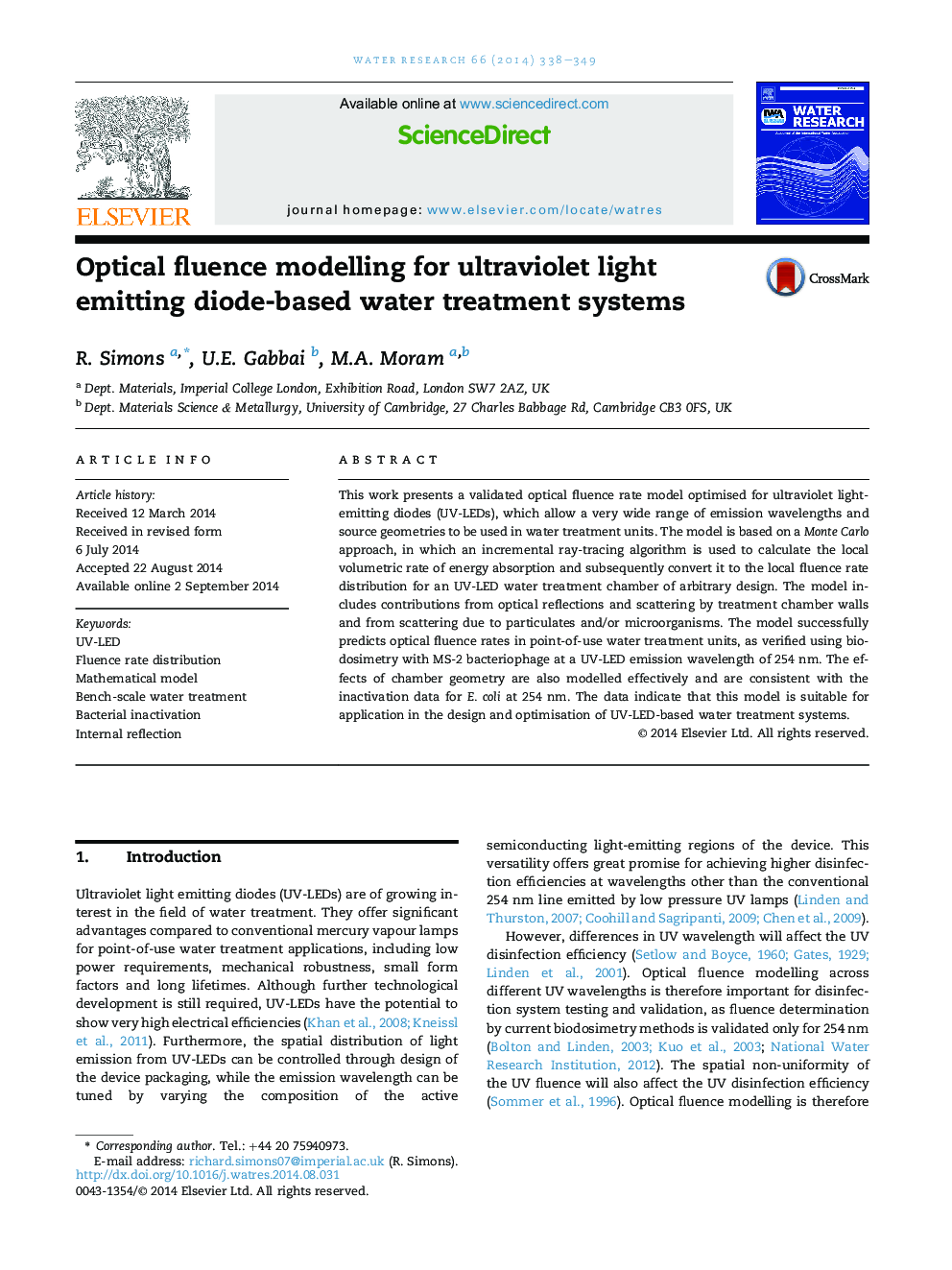| Article ID | Journal | Published Year | Pages | File Type |
|---|---|---|---|---|
| 4481404 | Water Research | 2014 | 12 Pages |
•A mathematical model for fluence rate calculation was developed.•The model includes contributions from diffuse scattering and reflection at interfaces.•Our target is to aid development of UV-LED based water treatment systems.•Simulated fluence rates matched up to biodosimetry experiments on such a system.•A validated method for fluence modelling of bench-scale systems is presented.
This work presents a validated optical fluence rate model optimised for ultraviolet light-emitting diodes (UV-LEDs), which allow a very wide range of emission wavelengths and source geometries to be used in water treatment units. The model is based on a Monte Carlo approach, in which an incremental ray-tracing algorithm is used to calculate the local volumetric rate of energy absorption and subsequently convert it to the local fluence rate distribution for an UV-LED water treatment chamber of arbitrary design. The model includes contributions from optical reflections and scattering by treatment chamber walls and from scattering due to particulates and/or microorganisms. The model successfully predicts optical fluence rates in point-of-use water treatment units, as verified using biodosimetry with MS-2 bacteriophage at a UV-LED emission wavelength of 254 nm. The effects of chamber geometry are also modelled effectively and are consistent with the inactivation data for E. coli at 254 nm. The data indicate that this model is suitable for application in the design and optimisation of UV-LED-based water treatment systems.
